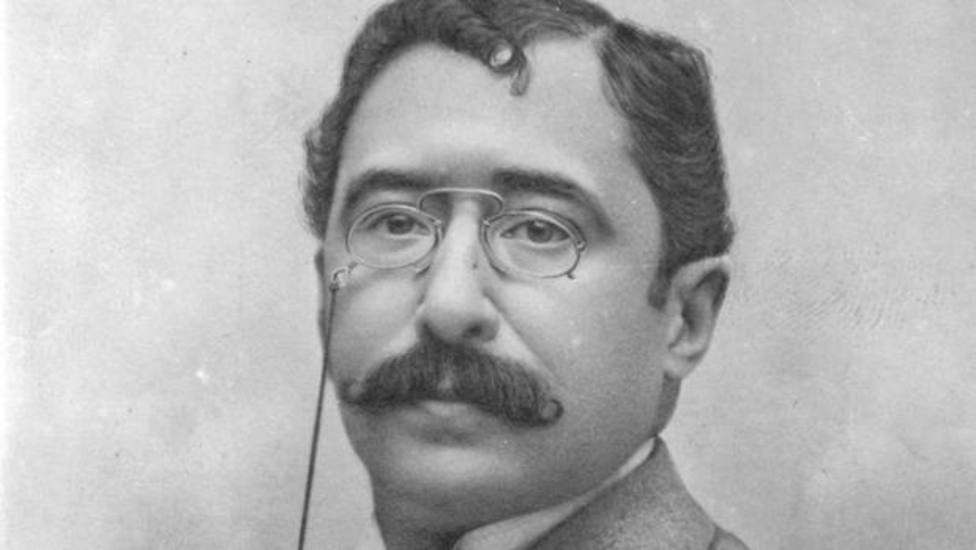
I remember a lady who was about to make a move to a foreign country and had to get rid of many of her books, and she offered me a French edition of Balzac's short novels.
I leafed through the book carefully and resisted the temptation. I considered it an abuse to make someone part with a classic, especially if one of the little works was The atheist's mass.
I was not aware of its existence until I found a mention in an anthology of writings by Mariano de Cavia, a journalist zaragozano expert in bullfighting chronicles, political satires and articles of customs.
In those pages I found The Atheist at Mass, published in 1895 in El Imparcial. Balzac's story tells us about Dr. Desplain, a atheist and makes all sorts of impassioned historical and cultural arguments about philosophers.
However, one day, his assistant, Dr. Brianchon, caught him in the Parisian church of Saint Sulpice hearing mass in a chapel. Later, he will learn that Desplain attends four masses a year for the soul de Bourgeat, a water carrier who shared with him his meager possessions and was his protector during the miserable and self-sacrificing years of his medical studies.
Yet this pious practice does not prevent the doctor from clinging to his atheistic convictions, even if Balzac conveys to the reader the hope Bourgeat can open the gates of heaven for his protégé.
I remembered my countryman Mariano de Cavia in these days of July, the centenary of his death. death. For some, he would only be the name of a traffic circle in Madrid or a bust and a plaque in Zaragoza, if the newspaper ABC had not instituted a journalism award named after him.
Moreover, in the article cited above, Cavia considers Balzac's story to be a sublime fantasyand somewhat implausible. However, he adds that he considers it a real and palpable fact that there is a place where there are always atheists who pray or attend massThe chapel of the Virgin of Pilar in Zaragoza.
It is written by an Aragonese born in a street near the basilica and baptized in that temple. This did not prevent him from being an heir to the progressive liberalism of Espartero, which had deep roots in his hometown. However, his ideology was not incompatible, neither with cordiality nor with the friendshipsuch as the one he had with the Catholic Menéndez Pelayo.
In the aforementioned article in El Imparcial, Cavia had no qualms in admitting a ".miracle"This was very common in his Aragonese homeland and undoubtedly occurred in famous anticlericals such as Goya or Buñuel.
It can be summed up in one phrase, which was widely spread: "In Aragon, those who do not believe in Godbelieves in the Virgin of Pilar." It goes without saying that this quote would arouse in some, in his time and now, disqualifications such as traditionalism, atavism, regionalism, jingoism, childishness, sentimentalism... I would not finish the list, but I am convinced that Cavia was right when he considered that the Virgin of the Pillar is more than a pious invocation of the Mother of Jesus.
In fact, he defines his cult as "an inexhaustible stream of faithhope and love". It could be added that it resembles a powerful current that drags believers and non-believers, and that could only be explained from a deep-rooted filial feeling that transcends ideologies and opinions. Hence, an unbeliever can feel at ease among the multitude of devotees who pray daily before the Virgin of Pilar.
It is possible that Cavia in his article identified himself with ".an atheist of good faith, noble recollection and clean spirit". Atheist or not, Mariano de Cavia published some verses for his Virgin, at the age of twenty-two, in the Diario de Zaragoza, and he used to wear a Pilarist medal around his neck.
Years later, in another article, Cavia recalled that in the face of the Pilar faith and the freedomin allusion to the sieges of Zaragoza in 1808, and described the basilica as "half temple of the Lord, half fortress of the people".
This synthesis of the religious and the popular must have been felt by our journalist when reading Zaragoza, one of the most remembered National Episodes by Benito Pérez Galdós, known for his republican and anticlerical beliefs. Unlike other books by the author, here the conflict of the two Spainand the only passions present are greed, jealousy or ambition.
The unity of the people with the Virgin in the second siege of the Aragonese capital is palpable, and this is a significant example: "The prayersThe prayers and demonstrations of gratitude formed an ensemble that did not resemble the prayers of any kind of faithful... There was a lack of the silence solemnity of the sacred places: everyone was there as if they were at home; as if the house of the beloved Virgin, the mother, mistress and queen of the people of Zaragoza, was also the house of his children, servants and subjects".
Cavia and Galdós knew how to unravel the key to the enormous Pilarist devotion: no one feels a stranger in his mother's house.
Antonio R. Rubio Plo
Degree in History and Law
International writer and analyst
@blogculturayfe / @arubioplo
Published in "COPE.ES".